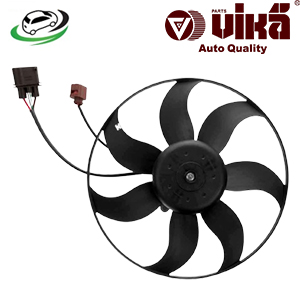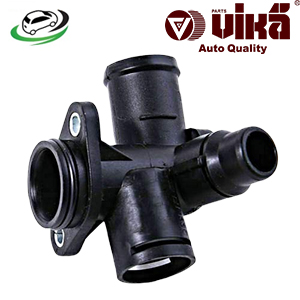-14%
Get Left Outer Steering Tie Rod End Audi Q7 / Volkswagen Touareg 7L0422817D
The steering tie rod end is a critical component in a vehicle’s steering and suspension system, playing a vital role in ensuring precise steering control and vehicle stability. This comprehensive overview will explore the design, function, importance, types, common issues, and maintenance of the steering tie rod end.
Design and Function
Design:
- Construction:
- Tie Rod End Assembly: The tie rod end consists of a metal rod with a ball-and-socket joint at one end and a threaded end at the other. The ball-and-socket joint allows for angular movement, enabling the tie rod end to accommodate steering and suspension movements.
- Housing and Ball Joint: The ball joint is housed within a protective boot or dust cover to keep out dirt and debris while allowing smooth movement. This joint typically includes a bearing or socket that facilitates rotation and pivoting.
- Threads and Connectors: The threaded end of the tie rod end connects to the steering linkage or steering rack. The threads allow for adjustments in alignment and steering geometry.
- Placement:
- Position in Steering System: The tie rod end is located at the end of the tie rod, which is a component of the steering linkage. It connects the steering rack or center link to the steering knuckle or spindle on the wheel assembly.
- Alignment with Suspension Components: The tie rod end works in conjunction with other suspension components, such as control arms and struts, to ensure proper steering and suspension alignment.
Functionality:
- Steering Control:
- Linkage Role: The tie rod end serves as a link between the steering rack or center link and the steering knuckle, transferring steering input from the steering wheel to the wheels. When the driver turns the steering wheel, the tie rod end helps convert this motion into wheel movement.
- Angular Movement: The ball-and-socket joint allows for angular movement, enabling the wheels to turn in response to steering input while accommodating the up-and-down motion of the suspension.
- Alignment Adjustment:
- Steering Geometry: The tie rod end plays a role in maintaining proper steering geometry and alignment. It allows for adjustments to the alignment angles, such as toe-in and toe-out, to ensure accurate wheel alignment and stable handling.
- Adjustability: The threaded design of the tie rod end enables precise adjustment of the steering linkage, allowing for fine-tuning of wheel alignment settings.
Importance of the Steering Tie Rod End
- Steering Precision:
- Direct Steering Control: The tie rod end directly affects the precision and responsiveness of steering control. A well-functioning tie rod end ensures that steering inputs are accurately transmitted to the wheels, resulting in precise handling and maneuverability.
- Vehicle Stability: Properly functioning tie rod ends contribute to vehicle stability, particularly during cornering and high-speed driving. They help maintain the correct alignment of the wheels, reducing the risk of steering instability.
- Safety and Handling:
- Preventing Steering Issues: Worn or damaged tie rod ends can lead to steering problems, such as excessive play, wandering, or difficulty in maintaining a straight line. Addressing these issues promptly is essential for safe driving and handling.
- Avoiding Tire Wear: Properly aligned tie rod ends help prevent uneven tire wear caused by misalignment or incorrect steering angles. This extends the lifespan of the tires and improves overall driving performance.
- Vehicle Longevity:
- Reducing Wear and Tear: A functioning tie rod end helps reduce wear and tear on other steering and suspension components, including the steering rack, control arms, and wheel bearings. This contributes to the overall longevity of the vehicle’s steering system.
Types of Steering Tie Rod Ends
- Outer Tie Rod Ends:
- Design: Outer tie rod ends connect the steering linkage or rack to the steering knuckle or spindle on the wheel assembly. They are located at the end of the tie rod and are typically responsible for turning the wheels.
- Application: Outer tie rod ends are critical for steering response and are often the primary focus of alignment adjustments.
- Inner Tie Rod Ends:
- Design: Inner tie rod ends connect the steering rack or center link to the tie rod assembly. They are positioned closer to the steering rack and are responsible for transmitting steering input to the outer tie rod ends.
- Application: Inner tie rod ends play a role in steering geometry and alignment adjustments, affecting the overall steering system’s performance.
Common Issues with Steering Tie Rod Ends
- Wear and Tear:
- Causes: Tie rod ends can wear out over time due to constant movement, exposure to road conditions, and lack of maintenance. The ball joint and bushings within the tie rod end can become worn or damaged.
- Signs: Symptoms of worn tie rod ends include steering play or looseness, clunking noises during steering, uneven tire wear, and a noticeable decrease in steering precision.
- Ball Joint Failure:
- Causes: The ball joint within the tie rod end can fail due to lack of lubrication, contamination, or excessive wear. This can lead to a loss of steering control and increased risk of component failure.
- Signs: Symptoms of ball joint failure include a knocking or clunking sound when turning, excessive steering play, and difficulty in maintaining alignment.
- Dust Boot Damage:
- Causes: The dust boot or protective cover can become damaged or cracked due to exposure to road debris, harsh weather, or aging. This can allow dirt and moisture to enter the ball joint, leading to accelerated wear.
- Signs: Signs of dust boot damage include visible cracks or tears in the boot, grease leakage, and increased steering noise or play.
- Alignment Issues:
- Causes: Misalignment of the tie rod end can result from improper installation, impact damage, or suspension component issues. Misalignment can affect steering precision and vehicle handling.
- Signs: Symptoms of alignment issues include uneven tire wear, steering wheel off-center, and difficulty in maintaining a straight line.
Maintenance and Inspection
- Regular Inspections:
- Visual Checks: Regularly inspect the tie rod ends for signs of damage, wear, or contamination. Look for visible cracks or tears in the dust boot, as well as any unusual play or looseness in the steering system.
- Check for Noise: Pay attention to any unusual noises, such as clunking or knocking sounds, when turning the steering wheel. These sounds may indicate worn or damaged tie rod ends.
- Alignment Checks:
- Monitor Alignment: Regularly check the vehicle’s alignment and steering geometry. Ensure that the tie rod ends are properly adjusted to maintain correct wheel alignment and steering performance.
- Professional Alignment: Have a professional alignment performed if you notice signs of misalignment, such as uneven tire wear or steering issues. Proper alignment helps ensure optimal steering performance and tire longevity.
- Lubrication and Cleaning:
- Lubricate Moving Parts: If applicable, ensure that the tie rod end’s ball joint and moving parts are properly lubricated. Follow the manufacturer’s recommendations for lubrication intervals and types of lubricant.
- Clean Debris: Keep the tie rod ends and surrounding areas clean and free from debris. Remove any dirt or contaminants that could affect the performance and longevity of the components.
- Replacement:
- Follow Manufacturer’s Recommendations: Replace tie rod ends according to the manufacturer’s recommendations or when signs of wear or damage are observed. Addressing issues promptly helps maintain safe and reliable steering performance.
- Use Quality Parts: When replacing tie rod ends, use high-quality parts that meet or exceed the manufacturer’s specifications. Proper installation and alignment are crucial for optimal performance.
Replacing the Steering Tie Rod End
- Preparation:
- Gather Tools and Parts: You will need a new tie rod end, basic hand tools, a steering linkage separator (also known as a tie rod end puller), and alignment tools.
- Consult the Manual: Refer to the vehicle’s service manual for specific instructions and specifications related to tie rod end replacement.
- Remove the Old Tie Rod End:
- Lift the Vehicle: Safely lift and support the vehicle using a jack and jack stands to access the steering and suspension components.
- Remove the Nut: Remove the nut securing the tie rod end to the steering knuckle or spindle. Use a steering linkage separator to detach the tie rod end from the knuckle.
- Disconnect the Tie Rod End: Unscrew the tie rod end from the steering linkage or rack, and carefully remove it from the vehicle.
- Install the New Tie Rod End:
- Position the New Tie Rod End: Thread the new tie rod end into the steering linkage or rack, ensuring proper alignment with the steering knuckle or spindle.
- Secure the Tie Rod End: Reinstall the nut and tighten it to the manufacturer’s specifications. Ensure that the tie rod end is properly seated and secured.
- Alignment and Testing:
- Check Alignment: Perform a wheel alignment to ensure proper steering geometry and alignment settings. Adjust the alignment as needed to achieve correct wheel alignment.
- Test the Steering: Test the steering system to ensure proper operation and check for any unusual noises or steering issues. Verify that the steering performance is smooth and responsive.
Follow us on Facebook for more parts.



